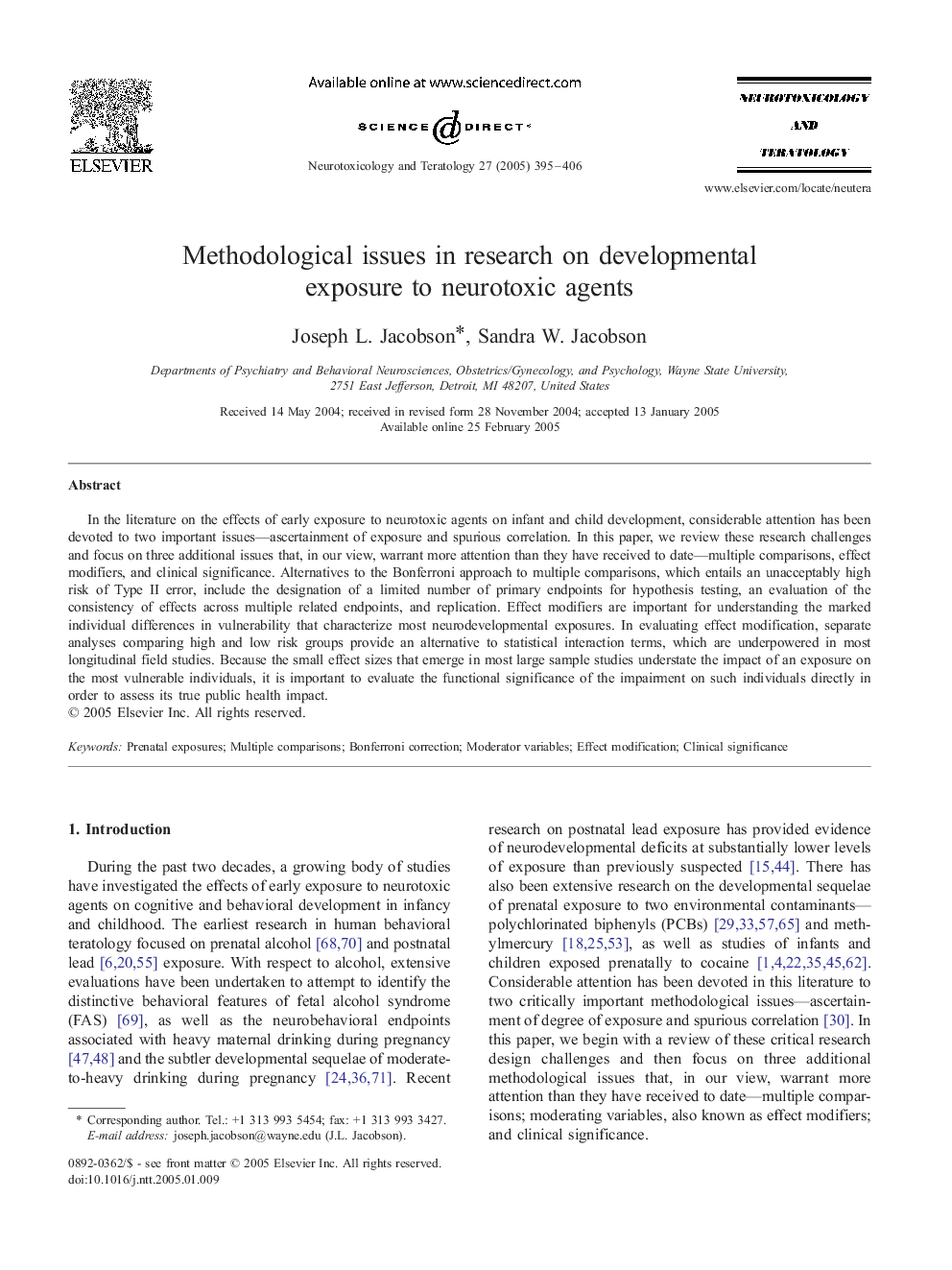| Article ID | Journal | Published Year | Pages | File Type |
|---|---|---|---|---|
| 9032875 | Neurotoxicology and Teratology | 2005 | 12 Pages |
Abstract
In the literature on the effects of early exposure to neurotoxic agents on infant and child development, considerable attention has been devoted to two important issues-ascertainment of exposure and spurious correlation. In this paper, we review these research challenges and focus on three additional issues that, in our view, warrant more attention than they have received to date-multiple comparisons, effect modifiers, and clinical significance. Alternatives to the Bonferroni approach to multiple comparisons, which entails an unacceptably high risk of Type II error, include the designation of a limited number of primary endpoints for hypothesis testing, an evaluation of the consistency of effects across multiple related endpoints, and replication. Effect modifiers are important for understanding the marked individual differences in vulnerability that characterize most neurodevelopmental exposures. In evaluating effect modification, separate analyses comparing high and low risk groups provide an alternative to statistical interaction terms, which are underpowered in most longitudinal field studies. Because the small effect sizes that emerge in most large sample studies understate the impact of an exposure on the most vulnerable individuals, it is important to evaluate the functional significance of the impairment on such individuals directly in order to assess its true public health impact.
Keywords
Related Topics
Life Sciences
Environmental Science
Health, Toxicology and Mutagenesis
Authors
Joseph L. Jacobson, Sandra W. Jacobson,
